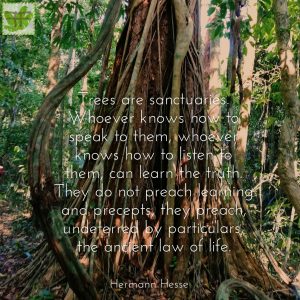Primitive skills are essential for an independent and autarkic life in harmony with one’s environment. They are fun to practice, extremely rewarding, and often have a playful character.
It is essential to know how to survive without modern technology, since we can not be sure how much Climate Breakdown will disrupt our lives in the next decades and how much technology will still be available by then.
Fire
One of the most fundamental things to know is undoubtedly how to start a fire without lighter/matches. We as a species have become (rather pathetically) dependent on fire – yet the vast majority of people today have not the slightest clue as to how to accomplish this basic feat of human existence without modern technology.
While hand and bow drills are the most widely known technique for making fire, if there is bamboo available in your environment (as in our case), using a fire saw is much easier and requires less skill.
VIDEO FIRE SAW
A variation is the so-called fire thong, where a pullstring (usually wood, bamboo or rattan fibre) is used to create friction through pulling your hands up and down.

The fire thong is the preferred method of the Kayan people of Malaysia
Hunter-gatherers in Thailand and Malaysia (like the Mlabri or the Penan) have long used flint stones to start a fire – and we’re trying to obtain some, too.
Obtaining food and water
The most essential thing – even more important than fire – is obtaining food and water from one’s environment.
Gathering food from the wild requires an extensive knowledge of one’s local environment – but with this precondition, feeding yourself is not difficult.
Hunting is a lot more difficult, and requires extreme skill (with bow & arrow or blow pip) and knowledge of animal bevaior and movements, feeding places, water holes, etc.
Trapping is much easier than actively stalking animal pray, yet not as efficient. A variety of snares, slings, or even dug-out pits can be used for this (we won’t go into any detail because of the precarious legal situation concerning trapping here in Thailand).
As for water: the easiest way to find water is to look for bamboo, which is easily found in almost every forest in Southeast Asia. Inside the segments of the bamboo stem water is collected that can easily be used if there is no other water source around during a walk in the jungle – or as an exclusive refreshment. It is very pure, since it got filtered through the whole bamboo plant. The best time to obtain water from bamboo is in the morning (6-10am), when the plant pushes water from its root system to its leaves. Usually the most water is contained in the bottom segments of older trees which are already spotted. It can be obtained by cutting off the top (careful not to split the bamboo) or drilling a hole in the upper part of the stem segment with a machete. A simple straw can be made in two seconds from a small bamboo branch.
Other sources of water include wild banana trees: if you cut them at the base, water will flow out of the trunk – make sure you have a container (such as a cup-shaped leaf) ready to catch the water. Be sure to also eat the heart of the banana trunk you just cut – it’s a pretty good jungle vegetable. The remaining stub of the banana tree can be carved out so that it resembles a bowl, which will automatically fill with water several times over the next few hours.
IMAGE BANANA STUB
Primitive construction
Most of the time we still combine primitive techniques with modern ones – for instance, we still use nails and screws. We plan on building a primitive hut from all-natural materials in the upper part of our garden as an experiment.
If you use natural building materials, they tend to have a better overall performance, produce no trash since they are 100% biodegradable, but are rather limited in their durability. A roof made from natural materials such as various palm leaves, grasses or bamboo pieces blocks off the heat of the sun very effectively and is therefore much better than metal sheet roof tiles. Poles and walls from wood and/or bamboo look beautiful, are lightweight and can easily be replaced, but are subject to termite attacks and rotting when exposed to humidity.
For the roof of the canteen at our last project we used a large palm leaf called “bai thang”, which is durable and very easy to process.

“Bai thang”
It grew in front of one of our neighbors house and therefore didn’t cost anything, didn’t require transportation and was also used to maintain and repair all other roofs.
Here we experiment with several species of palm as thatch. Salak and wild betel nut are two abundant species that are moderately durable, so we will use those for our primitive dwelling.
Primitive glue
Any tree of the jackfruit family (cempedak, marang, breadfruit, etc.) can be used to obtain an extremely sticky latex by making a small incision in the trunk.

This small cut will yield about 5-10 ml of latex
This is the easiest technique, using only a leaf, a small twig to fix the leaf into a cup shape, and some grass to tie it to the tree.
One cut will yield about one soda bottle lid full (more if you keep the wound open by scratching out the dry latex), so for larger quantities several cuts in a V-shape may be made. The resulting glue is sticky enough that hunter-gatherers in Malaysia use it to as bird lime (to catch birds – boil the latex down to concentrate it, spread it on a stick, and wait for them to land).
Primitive rope and cord
We make rope from the fiber of tree bark which is strong enough to build hammocks from it (even though we need a lot more rope for an actual hammock). This is the first rudimentary try of making rope:

Rope made from two different kinds of tree bark fiber
This plant fiber based rope has a durability from a few months to one or two years, depending on the plant you use. A very strong fiber can be obtained from the bark of the Melinjo (“phak miang”) tree – the rope is so strong that people used it for fishing nets and rods, it even withstands being used in sea water (see ‘Primitive fishing methods’ below).
A short-term rope can be made made easily from the fiber of a banana trunk (see Rare Banana Collection).
Primitive fishing methods
Many hunter-gatherer tribes use plant poisons to fish in small streams, it is a very effective method to catch many small to medium sized fish in a short time.

“Yaan sao dam”, a common fish poison in Thailand
We tested a primitive fishing method using plant poison from the root of a tree called “yaan sao dam”, which is crushed and thrown into a small river. It contains a chemical that depletes the water of oxygen, forcing the fish to come to the surface for breathing, where you can easily just collect them by hand. After 5-10 minutes it begins mixing with the arriving fresh water and soon loses its effectiveness.

Crushed root – you need about 20-30 roots for the poison to be effective
Soon we will try to make a fishing rod from the bark of the “phak miang” tree, which is very tenuous but strong and durable even in sea water.
The spiky vine-like extension of rattan leaves (we call them “Nature’s barbed wire”) can be used as a fishing rod as well (albeit for small fish only), you just remove all pairs of spikes except the last one and tie a worm around it just above the last row of spikes.

A simple fishing line from rattan
Primitive instruments
Building primitive instruments is easy, quick and a lot of fun – whether it is a drum or a simple flute from bamboo. Mostly it takes only a few tries to produce a beautiful sounding instrument.
Building a bow

Rattan twine on the jungle floor
For building a bow we use rattan wood, which is easily found in the jungle. It is very flexible, yet hard to break. If you soak rattan in water it becomes even more flexible, and you can harden it in the desired position by heating it carefully over a fire. The first version of the bow was a little too thin, and was therefore not very strong (low pulling force required to draw the bow), but it worked.
The hardest part is not making the bow itself, it is making the arrows. They have to be perfectly straight, smoothly finished and need to be feathered at the back end to ensure a straight flight.





















![[English version below]
ช่วงนี้ลูกเนยถั่วออกเยอะมากๆเก็บกินแทบไม่ทัน😅
นี่เก็บจากต้นเดียวเอง เป็นผลไม้จากทวีปอเมริกาใต้อีกชนิดหนึ่งที่เรามีในสวน กินอร่อยจริง รสชาติสมชื่อ คือเหมือนกินเมล็ดถั่วกับเนยในลูกเดียว ต้นนี้ปลูกง่าย โตเร็ว ชอบอากาศร้อนชื้นและแห้งแล้ง ลูกสุกเปลี่ยนสีเป็นสีแดงตามรูปเลย เนื้อนุ่มเคี้ยวละมุนในปากแต่เนื้อค่อนข้างติดเมล็ด😋 ปลูกแค่2-3ปีก็ออกลูกให้กินแล้วเผลอๆอาจจะแค่ปีกว่าๆก็ออกลูกได้แล้ว ถ้าขยันดูแลดีเป็นพิเศษ😅 ตอนที่นั่งกินทำให้มีความรู้สึกเหมือนกำลังกินขนมหรือลูกอม เพราะกินสนุก กินอร่อยๆ และปลอดภัยต่อสุขภาพแบบเกินร้อยถ้าเทียบกับขนมตัวจริง😅 เด็กๆกินได้ผู้ใหญ่ก็กินได้ต้นนี้เลย ต้นเนยถั่ว😋
ปล. หากท่านใดสนใจอยากได้เมล็ดพันธุ์ติดต่อสวนเราได้จ้า😍 มีเยอะคะช่วงนี้😀 เราจัดส่งเมล็ดให้ฟรีๆเพียงแค่คุณต้องจ่ายค่าส่งเองเท่านั้น อยากได้เมล็ดเม้นท์ใต้โพสต์หรือส่งข้อความหาเราได้เลยคะ😍
The peanut butter tree gifts us generously this year - after only three years, we finally harvest enough to eat as much as we would like to. We spread the seeds by throwing handfuls around in the upper half of the garden, and since they sprout pretty easily we will have plenty more in the years to come, and there's gonna be plenty of leftovers for the birds as well (who also really enjoy peanut butter fruit, but only occasionally get to eat a fruit we missed) 😊
#permaculture #peanutbutterfruit #healthysnack #slowfood #junglelife](https://scontent-sin6-4.cdninstagram.com/v/t51.29350-15/283300740_155802276938680_7664917016698200906_n.webp?stp=dst-jpg&_nc_cat=101&ccb=1-7&_nc_sid=8ae9d6&_nc_ohc=fWTX5D0N1VUAX9Wlb-G&_nc_ht=scontent-sin6-4.cdninstagram.com&edm=ANo9K5cEAAAA&oh=00_AT-NxLhSMBjV6-esVM29Z7t4UHCbZjoFcBYeowWnf2IdIg&oe=628F14D4)
![[English version below]
ช่วงนี้ลูกเนยถั่วออกเยอะมากๆเก็บกินแทบไม่ทัน😅
นี่เก็บจากต้นเดียวเอง เป็นผลไม้จากทวีปอเมริกาใต้อีกชนิดหนึ่งที่เรามีในสวน กินอร่อยจริง รสชาติสมชื่อ คือเหมือนกินเมล็ดถั่วกับเนยในลูกเดียว ต้นนี้ปลูกง่าย โตเร็ว ชอบอากาศร้อนชื้นและแห้งแล้ง ลูกสุกเปลี่ยนสีเป็นสีแดงตามรูปเลย เนื้อนุ่มเคี้ยวละมุนในปากแต่เนื้อค่อนข้างติดเมล็ด😋 ปลูกแค่2-3ปีก็ออกลูกให้กินแล้วเผลอๆอาจจะแค่ปีกว่าๆก็ออกลูกได้แล้ว ถ้าขยันดูแลดีเป็นพิเศษ😅 ตอนที่นั่งกินทำให้มีความรู้สึกเหมือนกำลังกินขนมหรือลูกอม เพราะกินสนุก กินอร่อยๆ และปลอดภัยต่อสุขภาพแบบเกินร้อยถ้าเทียบกับขนมตัวจริง😅 เด็กๆกินได้ผู้ใหญ่ก็กินได้ต้นนี้เลย ต้นเนยถั่ว😋
ปล. หากท่านใดสนใจอยากได้เมล็ดพันธุ์ติดต่อสวนเราได้จ้า😍 มีเยอะคะช่วงนี้😀 เราจัดส่งเมล็ดให้ฟรีๆเพียงแค่คุณต้องจ่ายค่าส่งเองเท่านั้น อยากได้เมล็ดเม้นท์ใต้โพสต์หรือส่งข้อความหาเราได้เลยคะ😍
The peanut butter tree gifts us generously this year - after only three years, we finally harvest enough to eat as much as we would like to. We spread the seeds by throwing handfuls around in the upper half of the garden, and since they sprout pretty easily we will have plenty more in the years to come, and there's gonna be plenty of leftovers for the birds as well (who also really enjoy peanut butter fruit, but only occasionally get to eat a fruit we missed) 😊
#permaculture #peanutbutterfruit #healthysnack #slowfood #junglelife](https://scontent-sin6-1.cdninstagram.com/v/t51.29350-15/281748280_711057433442587_7897669658700971285_n.webp?stp=dst-jpg&_nc_cat=111&ccb=1-7&_nc_sid=8ae9d6&_nc_ohc=5Wgi4EpwkV0AX8FBOiS&_nc_ht=scontent-sin6-1.cdninstagram.com&edm=ANo9K5cEAAAA&oh=00_AT8ex-gNO2q9J-QODVZZWxwSI6bqpMjqDd1Qr1Ji7mQ3Hw&oe=62906D82)
![[English version below]
ช่วงนี้ลูกเนยถั่วออกเยอะมากๆเก็บกินแทบไม่ทัน😅
นี่เก็บจากต้นเดียวเอง เป็นผลไม้จากทวีปอเมริกาใต้อีกชนิดหนึ่งที่เรามีในสวน กินอร่อยจริง รสชาติสมชื่อ คือเหมือนกินเมล็ดถั่วกับเนยในลูกเดียว ต้นนี้ปลูกง่าย โตเร็ว ชอบอากาศร้อนชื้นและแห้งแล้ง ลูกสุกเปลี่ยนสีเป็นสีแดงตามรูปเลย เนื้อนุ่มเคี้ยวละมุนในปากแต่เนื้อค่อนข้างติดเมล็ด😋 ปลูกแค่2-3ปีก็ออกลูกให้กินแล้วเผลอๆอาจจะแค่ปีกว่าๆก็ออกลูกได้แล้ว ถ้าขยันดูแลดีเป็นพิเศษ😅 ตอนที่นั่งกินทำให้มีความรู้สึกเหมือนกำลังกินขนมหรือลูกอม เพราะกินสนุก กินอร่อยๆ และปลอดภัยต่อสุขภาพแบบเกินร้อยถ้าเทียบกับขนมตัวจริง😅 เด็กๆกินได้ผู้ใหญ่ก็กินได้ต้นนี้เลย ต้นเนยถั่ว😋
ปล. หากท่านใดสนใจอยากได้เมล็ดพันธุ์ติดต่อสวนเราได้จ้า😍 มีเยอะคะช่วงนี้😀 เราจัดส่งเมล็ดให้ฟรีๆเพียงแค่คุณต้องจ่ายค่าส่งเองเท่านั้น อยากได้เมล็ดเม้นท์ใต้โพสต์หรือส่งข้อความหาเราได้เลยคะ😍
The peanut butter tree gifts us generously this year - after only three years, we finally harvest enough to eat as much as we would like to. We spread the seeds by throwing handfuls around in the upper half of the garden, and since they sprout pretty easily we will have plenty more in the years to come, and there's gonna be plenty of leftovers for the birds as well (who also really enjoy peanut butter fruit, but only occasionally get to eat a fruit we missed) 😊
#permaculture #peanutbutterfruit #healthysnack #slowfood #junglelife](https://scontent-sin6-3.cdninstagram.com/v/t51.29350-15/281872908_168143295660521_2987194449941779810_n.webp?stp=dst-jpg&_nc_cat=106&ccb=1-7&_nc_sid=8ae9d6&_nc_ohc=GK8ricbSfgIAX8ZbpMH&_nc_ht=scontent-sin6-3.cdninstagram.com&edm=ANo9K5cEAAAA&oh=00_AT8nW1-qCG5_lEoJuLeeMxsi9mh5yYVuZI-qlgv86RVIgA&oe=628F1714)
![[English version below]
จำปาดะ (ผลไม้อีกชนิดหนึ่งในตระกูลขนุน) ต้นนี้ที่อยู่ข้างบ้านของเรา ออกดอกติดผลให้กินมากขึ้นในแต่ล่ะปี ตอนนี้ต้นกำลังออกดอก แต่ดูเหมือนว่าจำปาดะจะติดเยอะมากปีนี้ (เย่) อยากกินแล้วน๊า!! 😋
The cempedak tree besides our house gifts us with more and more abundance each year - she just started flowering, but it already looks like it's gonna be a good year for cempedak! Can't wait!!
#cempedak #artocarpus #abundance #foodjungle #permaculture #junglelife #subsistencefarming](https://feunfoo.org/wp-content/uploads/2022/02/273890094_1026327931566679_2121004513380987491_n.jpg)
![[English version below]
มะวานที่พวกเราเราขึ้นไปเอาข้าวให้ไก่และดูพระอาทิตย์ตก พอดีถือโทรศัพท์ติดตัวไปด้วย และนี่ก็คือวิวยามเย็นสวยสุดๆที่ได้เห็นกัน! เหตุที่หมอกทั้งหนาและสูงถึงเพียงนี้ก็คือ ฝนตกทั้งวันแล้วก็หยุดตกก่อนจะมืดค่ำ มันแปลกมากๆ เพราะนี่มันกำลังจะเข้าฤดูร้อนแล้ว แต่มันเป็นเรื่องดีมากสำหรับพืชสวน ต้นไม้ต่างก็มีความสุขกัน พวกเราเองก็ไม่ต้องรดน้ำผักไปอีกอาทิตย์หนึ่งเลยทีเดียว!
ช่วงไม่กี่เดือนมานี้อาจจะไม่ค่อยเห็นพวกเราอัพเดตเรื่องราวของสวนลงในสังคมอออนไลน์เท่าไหร่ มีเหตุผลอยู่ว่า ไม่อยากจะพกพาโทรศัพท์ติดตัวตลอดและอยากจะสนุกเพลิดเพลินไปกับสิ่งที่พวกเราทำกัน แทนที่จะมัวขบคิดว่ามันจะดูยังไงในรูปถ่าย แต่ยังไงพวกเราก็คงจะมาอัตเดตกันบ่อยขึ้นหลังจากนี้ ถ้ามีเวลาและแรงบันดาลใจ😄
Yesterday we finally had our phone with us again when we went to feed the chicken/watch the sunset, and this is what we were rewarded with! It rained the whole day and just cleared up before dusk - very strange, considering that it's dry season. Well, the garden loves it, the trees are happy, and we don't have to water our vegetables for at least another week!
We've been rather quiet on social media for the past few months, for no particular reason other than that we don't want to carry around our phone all the time, and just enjoy things instead of thinking how they would look like on camera 😀 Call it a partial digital detox! 😁 Well, maybe from now on we'll post more regularly, if we find the time and motivation 😜
#slowlife #sunset #permaculture #hillpeople
#junglelife #panorama #foodjungle](https://feunfoo.org/wp-content/uploads/2022/02/273822326_165241689169172_8620684220343524182_n.jpg)



No comments.